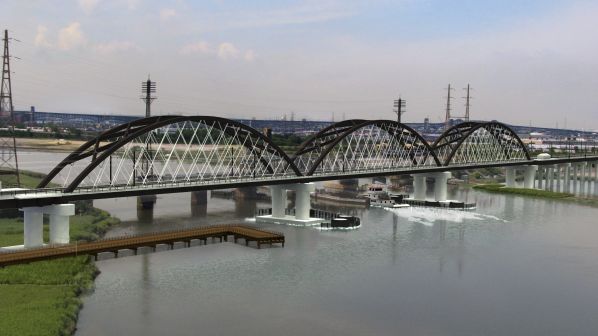The aim of the $US 30bn Gateway Program is to increase the resiliency of the Northeast Corridor (NEC), North America’s most heavily-used passenger railway. The NEC crosses the Hudson from New Jersey into Manhattan via the North River Tunnel, which has deteriorated due to its age, intensive use and damage sustained from saltwater exposure during Superstorm Sandy, which struck the region in October 2012.
In addition to the tunnel, the existing Portal Bridge over the Hackensack River would be replaced by two new bridges, while Secaucus Junction station would be expanded with additional tracks on the outside of the existing station, and a loop line which would allow New Jersey Transit trains from the Main-Bergen and Pascack Valley Lines to run into New York City. These services currently terminate at Hoboken.
In 2016 New York and New Jersey established the Gateway Program Development Commission, a not-for-profit entity with board members representing Amtrak and the two states, to oversee the project in coordination with federal and local partners.
However, the project has struggled to gain the necessary backing from Washington DC and New York and New Jersey have been at loggerheads with the Trump administration in recent months over the lack of federal support for the project. In March the Federal Transit Administration gave both the Portal Bridge and the new Hudson Tunnel a medium-low rating.
“The current Hudson River train tunnels are in dire condition, and it’s only a matter of time before one or both tubes fail,” the governors said in a joint statement. “Building the new Hudson Tunnel Project is the single most important infrastructure project in our nation, but the Trump administration has abdicated its responsibility by failing to pay their fair share to replace this federally-owned asset.”
“The Gateway Program isn’t just about New York and New Jersey - it’s about the entire national economy with 20% of the country’s GDP reliant on the region served by the Northeast Corridor. In the absence of leadership in Washington, we remain committed to moving ahead with this profoundly urgent infrastructure project.”

